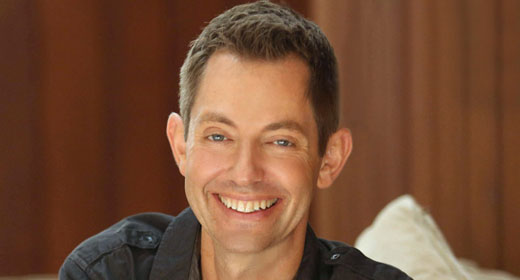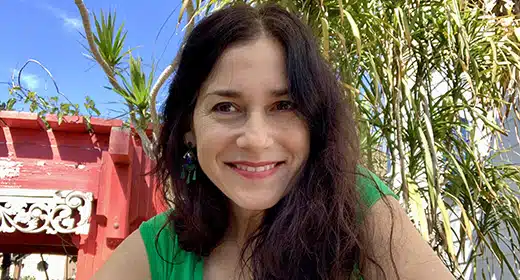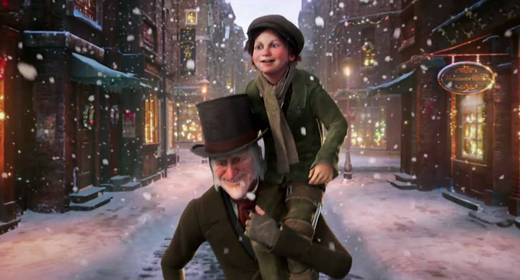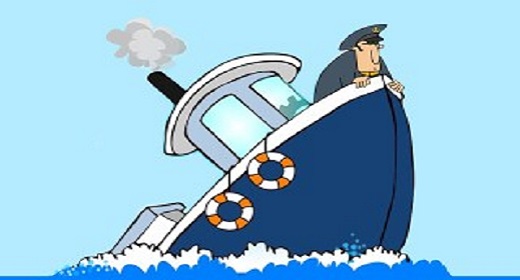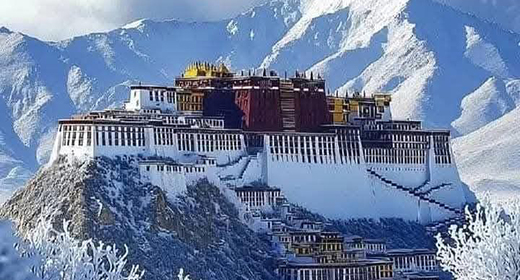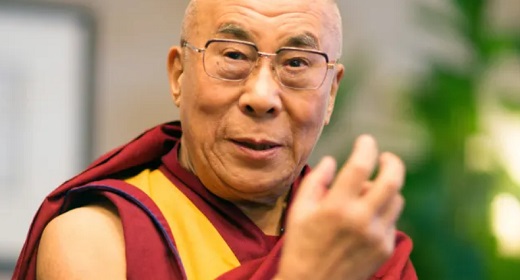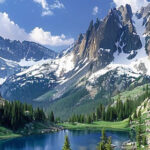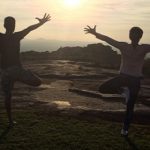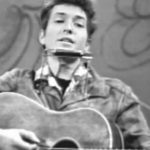by Keith Thompson: Literary agents are paid to hype their clients, but when the agent for Carlos Castaneda claimed that he was offering me “the interview of a lifetime,” it was hard to disagree…

After all, Castaneda’s nine best-selling books describing his extraordinary apprenticeship to Yaqui Indian sorcerer don Juan Matus had inspired countless members of my generation to explore mysticism, psychedelic drugs, and new levels of consciousness. Yet even as his reputation grew, the author had remained a recluse, shrouding himself in mystery and intrigue. Aside from a few interviews given seemingly at random over the years, Castaneda never ventured into the public spotlight. Few people even know what he looks like. For this interview, his agent told me, there could be no cameras and no tape recorders. The conversation would have to be recorded by a stenographer, lest copies of Castaneda’s taped voice fall into the wrong hands.
The interview — perhaps timed to coincide with the publication of Castaneda’s latest and most esoteric book, The Art of Dreaming — took place in the conference room of a modest office in Los Angeles, after weeks of back-and-forth negotiations with Castaneda’s agent. The arrangements were complicated, the agent said, by the fact that he had no way of contacting his client and could only confirm a meeting after speaking with him “whenever he decides to call . . . I never know in advance when that may be.”
Upon my arrival at noon, an energetic, enthusiastic, broad- smiled man walked across the room, extended his hand, and greeted me unassumingly: “Hello, I am Carlos Castaneda. Welcome. We can begin our conversation when you are ready. Would you like coffee, or perhaps a soda? Please make yourself comfortable.”
I had heard that Castaneda blends into the woodwork, or resembles a Cuban waiter; that his features are both European and Indian; that his skin is nut-brown or bronze; that his hair is black, thick, and curly. So much for rumor. His mane is now white, or largely so, short and mildly disheveled. If asked to guide a police artist in making a sketch, I would emphasize the eyes — large, bright, lucid. They may have been gray.
I asked Castaneda about his schedule. “The entire afternoon is available. I should think we’ll have all the time we need. When it’s enough, we’ll know.” Our conversation lasted four hours, continuing through a meal of deli sandwiches that arrived midway.
My first exposure to Castaneda’s work had been as much initiation as introduction. It was 1968. Police officers were clubbing demonstrators in the streets of Chicago. Assassins had taken Martin Luther King Jr. and Robert Kennedy. Aretha Franklin’s “Chain of Fools” topped the charts. All of this amidst an ocean of sandals, embroidered caftans, bell-bottoms, jangling bracelets, beads, and long hair for men and women alike.
Into all this stepped an enigmatic writer named Carlos Castaneda, toting a book called The Teachings of Don Juan: A Yaqui Way of Knowledge. I remember how it transformed me. The book I began reading was a curiosity; the book I held when I finished had become a manifesto, the kind of delirious cause celebre for which my psyche had been secretly training. What Castaneda seemed to be affirming — the possibility of awesome personal spiritual experience — was precisely what the Sunday-morning-only religion of my childhood had done its best to vaccinate me against.
Believing in Castaneda gave me faith that someday, some way, I might meet my very own don Juan Matus (don is a Spanish appellative denoting respect), the old Indian wise man/sorcerer who implores his protégé Carlos to get beyond looking — simply perceiving the world in its usually accepted forms. To be a true “man of knowledge,” Carlos has to learn the art of seeing, so that for the first time he can truly perceive the startling nature of the everyday world. “When you see,” don Juan says, “there are no longer familiar features in the world. Everything is new. Everything has never happened before. The world is incredible!”
But, really — who was this Castaneda? Where did he come from and what was he trying to prove, with his mysterious account of a realm that seemed to be of an entirely different order of reality?
Over the years, various answers to that question have been offered. Take your pick: (a) dissenting anthropologist; (b) sorcerer’s apprentice; (c) psychic visionary; (d) literary genius; (e) original philosopher; (f) master teacher. For balance, let’s not forget (g) perpetrator of one of the most spectacular hoaxes in the history of publishing.
Castaneda has responded to the bestowal of these conflicting ID tags with something like ironic amusement, as though he were an audience member enjoying the spectacle of a Chekhov comedy in which he himself may or may not be a character. The author has consistently declined — over a span of nearly three decades — to engage in the war of words about whether his books are authentic accounts of real-world encounters, as he maintains, or (as numerous critics have argued) fictional allegories in the spirit of Gulliver’s Travels and Alice in Wonderland.
This strategic reticence was learned from don Juan himself. “To slip in and out of different worlds you have to remain inconspicuous,” says Castaneda, who is rumored (his preferred status) to divide his time nowadays between Los Angeles, Arizona, and Mexico. “The more you are identified by people’s ideas of who you are and how you will act, the greater the constraint on your freedom. Don Juan insisted upon the importance of erasing personal history. If little by little you create a fog around yourself, then you will not be taken for granted, and you will have more room for change.”
Even so, scattered clearings in the fog offer glimpses of tracks left by the sorcerer’s apprentice in the years before his life faded to myth.
The scholarly consensus, unconfirmed by the author himself, is that Carlos Cesar Arana Castaneda was born in Peru on Christmas day 1925 in the historic Andean town of Cajamarca. Upon graduating from the Colegio Nacional de Nuestra Senora de Guadalupe, he studied briefly at the National Fine Arts School of Peru. In 1948 his family moved to Lima and established a jewelry store. After the death of his mother a year later, Castaneda moved to San Francisco and soon enrolled at Los Angeles City College, where he took two courses in creative writing and one in journalism.
Castaneda received a B.A. in anthropology in 1962 from the University of California at Los Angeles. In 1968, five years before Castaneda received his Ph.D. in anthropology, the University of California Press published The Teachings of Don Juan: A Yaqui Way of Knowledge, which became a national best seller following an enthusiastic notice by Roger Jellinek in the New York Times Book Review:
“One can’t exaggerate the significance of what Castaneda has done. He is describing a shamanistic tradition, a pre-logical cultural form that is no-one-knows how old. It has been described often. . . . But it seems that no other outsider, and certainly not a ‘Westerner,’ has ever participated in its mysteries from within; nor has anyone described them so well.”
The fuse was lit. The Teachings sold 300,000 copies in a 1969 Ballantine mass edition. A Separate Reality and Journey to Ixtlan followed from Simon & Schuster in 1971 and 1972. The saga continued in Tales of Power (1974), The Second Ring of Power (1977), The Eagle’s Gift (1981), The Fire from Within (1984), The Power of Silence (1987), and The Art of Dreaming (1993). (Bibliophiles may be interested to learn that Castaneda says he actually wrote a book about don Juan before The Teachings, titled The Crack Between Worlds, but lost the manuscript in a movie theater.)
In assessing the impact of his work, Castaneda’s admirers credit him with introducing to popular culture the rich and varied traditions of shamanism, with their emphasis on entering nonordinary realms and confronting strange and sometimes hostile spirit-powers, in order to restore balance and harmony to body, soul, and society. Inspired by don Juan’s use of peyote, jimsonweed, and other power plants to teach Castaneda the “art of dreaming,” untold numbers of pioneers extended their own inner horizons through psychedelic inquiry — with decidedly mixed results.
For their part, critics of Castaneda’s “path of knowledge” dismiss his work as an ongoing pseudo-anthropological shenanigan, complete with fabricated shamans and sensationalized Native American religious practices. The writings, they claim, have netted an unscrupulous author tremendous wealth at the cost of denigrating the sacred lifeways of indigenous peoples through commercial exploitation. Castaneda’s presentation, writes Richard de Mille in Castaneda’s Journey, “appeals to the reader’s hunger for myth, magic, ancient wisdom, true reality, self-improvement, other worlds, or imaginary playmates.”
Appropriately, the Castaneda I encountered was a study in contrasts. His presence was informal, spontaneous, warmly animated, and at times contagiously mirthful. At the same time, his still heavily accented (Peruvian? Chilean? Spanish?) diction conveyed the patrician formality of an ambassador at court: deliberate and well-composed, serious and poised, earnest and resolute. Practiced.
The contradiction, like so much about the man, may strike some as a bothersome inconsistency. But it shouldn’t. To reread Carlos Castaneda’s books (as I did, astonishingly, all nine of them) is to see clearly — perhaps for the first time — that contradiction is the force that ties his literary Gordian knot. As the author had told me, intently, during our lunch break: “Only by pitting two views against each other can one weasel between them to arrive at the real world.”
I had the sense he was letting me know his fortress was well guarded — and daring me to storm it anyway.
Keith Thompson: As your books have made a character named Carlos world-famous, the author called Castaneda has retreated further and further from public view. There have been more confirmed sightings of Elvis than of Carlos Castaneda in recent years. Legend has you committing suicide on at least three occasions; there’s the persistent story of your death in a Mexican bus crash two decades ago; and my search for a confirmed photo and audio tapes was fruitless. How can I be sure that you’re truly Castaneda and not a Carlos impersonator from Vegas? Have you got any distinguishing birthmarks?
Carlos Castaneda: None! Just my agent vouches for me. That’s his job. But you are free to ask me your questions and shine a bright light in my eyes and keep me here all night — like in the old movies.
You’re known for being unknown. Why have you agreed to talk now, after declining interviews for so many years?
Because I’m at the end of the trail that started over thirty years ago. As a young anthropologist, I went to the Southwest to collect information, to do fieldwork on the medicinal plants used by the Indians of the area. I intended to write an article, go on to graduate school, become a professional in my field. I hadn’t the slightest interest in meeting a weird man like don Juan.
How exactly did your paths cross?
I was waiting for the bus at the Greyhound station in Nogales, Arizona, talking with an anthropologist who had been my guide and helper in my survey. My colleague leaned over and pointed to a white-haired old Indian across the room — “Psst, over there, don’t let him see you looking” — and said he was an expert about peyote and medicinal plants. That was all I needed to hear. I put on my best airs and sauntered over to this man, who was known as don Juan, and told him I myself was an authority about peyote. I said that it might be worth his while to have lunch and talk with me — or something unbearably arrogant to that effect.
The old power-lunch ploy. But you weren’t really much of an authority, were you?
I knew next to nothing about peyote! But I continued rattling on — boasting about my knowledge, intending to impress him. I remember that he just looked at me and nodded occasionally, without saying a word. My pretensions melted in the heat of that day. I was stunned at being silenced. There I stood in the abyss, until don Juan saw that his bus had come. He said good- bye, with the slightest wave of his hand. I felt like an arrogant imbecile, and that was the end.
Also the beginning.
Yes, that’s when everything started. I learned that don Juan was known as a brujo, which means, in English, medicine man, curer, sorcerer. It became my task to discover where he lived. You know, I was very good at doing that, and I did. I found out, and I came to see him one day. We took a liking to each other and soon became good friends.
You felt like a moron in this man’s presence, but you were eager to seek him out?
The way don Juan had looked at me there in the bus station was exceptional — an unprecedented event in my life. There was something remarkable about his eyes, which seemed to shine with a light all their own. You see, we are — unfortunately we don’t want to accept this, but we are apes, anthropoids, simians. There’s a primary knowledge that we all carry, directly connected with the two-million-year-old person at the root of our brain. And we do our best to suppress it, which makes us obese, cardiac, cancer-prone. It was on that archaic level that I was tackled by don Juan’s gaze, despite my annoyance and irritation that he had seen through my pretense to expertise in the bus station.
Eventually you became don Juan’s apprentice, and he your mentor. What was the transition?
A year passed before he took me into his confidence. We had gotten to know each other quite well, when one day don Juan turned to me and said he held a certain knowledge that he had learned from an unnamed benefactor, who had led him through a kind of training. He used this word “knowledge” more often than “sorcery,” but for him they were one and the same. Don Juan said he had chosen me to serve as his apprentice, but that I must be prepared for a long and difficult road. I had no idea how astonishingly strange the road would be.
That’s a consistent thread of your books — your struggle to make sense of a “separate reality” where gnats stand a hundred feet tall, where human heads turn into crows, where the same leaf falls four times, where sorcerers conjure cars to disappear in broad daylight. A good stage hypnotist can produce astonishing effects. Is it possible that’s what don Juan was up to? Did he trick you?
It’s possible. What he did was teach me that there’s much more to the world than we usually acknowledge — that our normal expectations about reality are created by social consensus, which is itself a trick. We’re taught to see and understand the world through a socialization process that, when working correctly, convinces us that the interpretations we agree upon define the limits of the real world. Don Juan interrupted this process in my life by demonstrating that we have the capacity to enter into other worlds that are constant and independent of our highly conditioned awareness. Sorcery involves reprogramming our capacities to perceive realms as real, unique, absolute, and engulfing as our daily so-called mundane world.
Don Juan is always trying to get you to put your explanations of reality and your assumptions about what’s possible inside brackets, so you can see how arbitrary they are. Contemporary philosophers would call this “deconstructing” reality.
Don Juan had a visceral understanding of the way language works as a system unto itself — the way it generates pictures of reality that we believe, mistakenly, to reveal the “true” nature of things. His teachings were like a club beating my thick head until I saw that my precious view was actually a construction, woven of all kinds of fixated interpretations, which I used to defend myself against pure wondering perception.
There’s a contradiction in there, somewhere. On the one hand, don Juan desocialized you, by teaching you to see without preconceptions. Yet it sounds like he then resocialized you by enrolling you in a new set of meanings, simply giving you a different interpretation, a new spin on reality — albeit a “magical” one.
That’s something don Juan and I argued about all the time. He said in effect that he was despinning me and I maintained he was respinning me. By teaching me sorcery he presented a new lens, a new language, and a new way of seeing and being in the world. I was caught between my previous certainty about the world and a new description, sorcery, and forced to hold the old and the new together. I felt completely stalled, like a car slipping its transmission. Don Juan was delighted. He said this meant I was slipping between descriptions of reality — between my old and new views.
Eventually I saw that all my prior assumptions were based on viewing the world as something from which I was essentially alienated. That day when I encountered don Juan in the bus station, I was the ideal academic, triumphantly estranged, conniving to prove my nonexistent expertise concerning psychotropic plants.
Ironically, it was don Juan who later introduced you to “Mescalito,” the green-skinned spirit of peyote.
Don Juan introduced me to psychotropic plants in the middle period of my apprenticeship, because I was so stupid and so cocky, which of course I considered evidence of sophistication. I held to my conventional description of the world with incredible vengeance, convinced it was the only truth. Peyote served to exaggerate the subtle contradictions within my interpretative gloss, and this helped me cut through the typical Western stance of seeing a world out there and talking to myself about it. But the psychotropic approach had its costs — physical and emotional exhaustion. It took months for me to come fully around.
If you could do it over again, would you “just say no”?
My path has been my path. Don Juan always told me, “Make a gesture.” A gesture is nothing more than a deliberate act undertaken for the power that comes from making a decision. Ultimately, the value of entering a nonordinary state, as you do with peyote or other psychotropic plants, is to exact what you need in order to embrace the stupendous character of ordinary reality. You see, the path of the heart is not a road of incessant introspection or mystical flight, but a way of engaging the joys and sorrows of the world. This world, where each one of us is related at molecular levels to every other wondrous and dynamic manifestation of being — this world is the warrior’s true hunting ground.
Your friend don Juan teaches what is, how to know what is, and how to live in accord with what is — ontology, epistemology, and ethics. Which leads many to say he’s too good to be true, that you created him from scratch as an allegorical instrument of wise instruction.
The notion that I concocted a person like don Juan is preposterous. I’m a product of a European intellectual tradition to which a character like don Juan is alien. The actual facts are stranger: I’m a reporter. My books are accounts of an outlandish phenomenon that forced me to make fundamental changes in my life in order to meet the phenomenon on its own terms.
Some of your critics grow quite livid in their contention that Juan Matus sometimes speaks more like an Oxford don than a don Indian. Then there’s the fact that he traveled widely and acquired his knowledge from sources not limited to his Yaqui roots.
Permit me to make a confession: I take much delight in the idea that don Juan may not be the “best” don Juan. It’s probably true that I’m not the best Carlos Castaneda, either. Years ago I met the perfect Castaneda at a party in Sausalito, quite by accident. There, in the middle of the patio, was the most handsome man, tall, blond, blue-eyed, beautiful, barefoot. It was the early ’70s. He was signing books, and the owner of the house said to me, “I’d like you to meet Carlos Castaneda.” He was impersonating Carlos Castaneda, with an impressive coterie of beautiful women all around him. I said, “I am very pleased to meet you, Mister Castaneda.” He responded, “Doctor Castaneda.” He was doing a very good job. I thought, He presents a good way to be Castaneda, the ideal Castaneda, with all the benefits that go with the position. But time passes, and I’m still the Castaneda that I am, not very well suited to play the Hollywood version. Nor is don Juan.
Speaking of confessions: Did you ever contemplate downplaying the eccentricity of your teacher and presenting him as a more conventional character, to make him a better vehicle for his teachings?
I never considered such an approach. Smoothing rough edges to advance an agreeable plot is the luxury of the novelist. I’m not unfamiliar with the spoken and unspoken canon of science: “Be objective.” Sometimes don Juan spoke in goofy slang — the equivalent of “By golly!” and “Don’t lose your marbles!” are two of his favorites. On other occasions he showed a superb command of Spanish, which permitted me to obtain detailed explanations of the intricate meanings of his system of beliefs and its underlying logic. To deliberately alter don Juan in my books so he would appear consistent and meet the expectations of this or that audience would bring “subjectivity” to my work, a demon that, according to my best critics, has no place in ethnographic writing.
Skeptics have challenged you to exorcise that demon once and for all, by presenting for public inspection the field notes based on your encounters with don Juan. Wouldn’t that alleviate doubts about whether your writings are genuine ethnography or disguised fiction?
Whose doubts?
Fellow anthropologists, for starters.
The Senate Watergate Committee. Geraldo Rivera . . .
There was a time when requests to see my field notes seemed unencumbered by hidden ideological agendas. After The Teachings of Don Juan appeared I received a thoughtful letter from Gordon Wasson, the founder of the science of ethnomycology, the study of human uses of mushrooms and other fungi. Gordon and Valentina Wasson had discovered the existence of still-active shamanic mushroom cults in the mountains near Oaxaca, Mexico. Dr. Wasson asked me to clarify certain aspects of don Juan’s use of psychotropic mushrooms. I gladly sent him several pages of field notes relevant to his area of interest, and met with him twice. Subsequently he referred to me as an “honest and serious young man,” or words to that effect.
Even so, some critics proceeded to assert that any field notes produced by Castaneda must be assumed to be forgeries created after the fact. At that point I realized there was no way I could satisfy people whose minds were made up without recourse to whatever documentation I might provide. Actually, it was liberating to abandon the enterprise of public relations — intrinsically a violation of my nature — and return to my fieldwork with don Juan.
You must be familiar with the claim that your work has fostered the trivialization of indigenous spiritual traditions. The argument goes like this: A despicable cadre of non-Indian wannabees, commercial profiteers, and self-styled shamans has read your books and found them inspiring. How do you plead?
I didn’t set out to write an exhaustive account of indigenous spirituality, so it’s a fallacy to judge my work by that criterion. My books are instead a chronicle of specific experiences and observations in a particular context, reported to the best of my ability. But I do plead guilty to knowingly committing willful acts of ethnography, which is none other than translating cultural experience into writing. Ethnography is always writing. That’s what I do. What happens when spoken words become written words, and written words become published words, and published words get ingested through acts of reading by persons unknown to the author? Let’s agree to call it complex. I’ve been extremely fortunate to have a wide and diverse readership throughout much of the world. The entry requirement is the same everywhere: literacy. Beyond this, I’m responsible for the virtues and vices of my anonymous audience in the same way that every writer of any time and place is so responsible. The main thing is, I stand by my work.
What does don Juan think of your global notoriety?
Nada. Not a thing. I learned this definitively when I took him a copy of The Teachings of Don Juan. I said, “It’s about you, don Juan.” He surveyed the book — up and down, back and front, flipped through the pages like a deck of cards — then handed it back. I was crestfallen and told him I wanted him to have it as a gift. Don Juan said he had better not accept it, “because you know what we do with paper in Mexico.” He added, “Tell your publisher to print your next book on softer stock.”
Earlier you mentioned that don Juan deliberately made his teaching dramatic. Your writings reflect that. Much anthropological writing gives the impression of striving for dullness, as if banality were a mark of truth.
To have made my astonishing adventures with don Juan boring would have been to lie. It has taken me many years to appreciate the fact that don Juan is a master of using frustration, digression, and partial disclosure as methods of instruction. He strategically blended revelation and concealment in the oddest combinations. It was his style to assert that ordinary and nonordinary reality aren’t separate, but instead are encompassed in a larger circle — and then to reverse himself the next day by insisting that the line between different realities must be respected at all costs. I asked him why this must be so. He answered, “Because nothing is more important to you than keeping your personal world intact.”
He was right. That was my top priority in the early days of the apprenticeship. Eventually I saw — I saw — that the path of the heart requires a full gesture, a degree of abandon that can be terrifying. Only then is it possible to achieve a sparkling metamorphosis.
I also realized the extent to which the teachings of don Juan could and would be dismissed as “mere allegory” by certain specialists whose sacramental mission is to reinforce the limits that culture and language place on perception.
This approaches the question of who gets to define “correct” cultural description. Nowadays some of Margaret Mead’s critics declare she was “wrong” about Samoa. But why not say, less dogmatically, that her writings present a partial picture based on a unique encounter with an exotic culture? Obviously her discoveries mirrored the concerns of her time, including her own biases. Who has the authority to cordon off art from science?
The assumption that art, magic, and science can’t exist in the same space at the same time is an obsolete remnant of Aristotelian philosophical categories. We’ve got to get beyond this kind of nostalgia in the social science of the twenty-first century. Even the term ethnography is too monolithic, because it implies that writing about other cultures is an activity specific to anthropology, whereas in fact ethnography cuts across various disciplines and genres. Furthermore, even the ethnographer isn’t monolithic — he or she must be reflexive and multifaceted, just like the cultural phenomena that are encountered as “other.”
So the observer, the observed phenomenon, and the process of observation form an inseparable totality. From that perspective, reality isn’t simply received, it’s actively captured and rendered in different ways by different observers with different ways of seeing.
Just so. What sorcery comes down to is the act of embodying some specialized theoretical and practical premises about the nature of perception in molding the universe around us. It took me a long time to understand, intuitively, that there were three Castanedas: one who observed don Juan, the man and teacher; another who was the active subject of don Juan’s training — the apprentice; and still another who chronicled the adventures. “Three” is a metaphor to describe the sensation of endlessly changing boundaries. Likewise, don Juan himself was constantly shifting positions. Together we were traversing the crack between the natural world of everyday life and an unseen world, which don Juan called “the second attention,” a term he preferred to “supernatural.”
What you’re describing isn’t what comes to mind for most anthropologists when they think about their line of work, you know.
Oh, I’m certain you’re right about that! Someone recently asked me, What does mainstream anthropology think of Carlos Castaneda? I don’t suppose most of them think about me at all. A few may be a little bit annoyed, but they’re sure that whatever I’m doing is not scientific and they don’t trouble themselves. For most of the field, “anthropological possibility” means that you go to an exotic land, arrive at a hotel, drink your highball while a flock of indigenous people come and talk to you about the culture. They tell you all kinds of things, and you write down the various words for father and mother. More highballs, then you go home and put it all in your computer and tabulate for correlations and differences. That to them is scientific anthropology. For me, that would be living hell.
How do you actually write?
My conversations with don Juan throughout the apprenticeship were conducted primarily in Spanish. From the outset I tried to persuade don Juan to let me use a tape recorder, but he said relying on something mechanical only makes us more and more sterile. “It curtails your magic,” he said. “Better to learn with your whole body so you’ll remember with your whole body.” I had no idea what he meant. Consequently I began keeping voluminous field notes of what he said. He found my industriousness amusing. As for my books, I dream them. I gather myself and my field notes — usually in the afternoon but not always — and go through all my notes and translate them into English. In the evening I sleep and dream what I want to write. When I wake up, I write in the quiet hours of the night, drawing upon what has arranged itself coherently in my head.
Do you rewrite?
It’s not my practice to do so. Regular writing is for me quite dry and labored. Dreaming is best. Much of my training with don Juan was in reconditioning perception to sustain dream images long enough to look at them carefully. Don Juan was right about the tape recorder — and in retrospect, right about the notes. They were my crutch, and I no longer need them. By the end of my time with don Juan, I learned to listen and watch and sense and recall in all the cells of my body.
Earlier you mentioned reaching the end of the road, and now you’re talking about the end of your time with don Juan. Where is he now?
He’s gone. He disappeared.
Without a clue?
Don Juan told me he was going to fulfill the sorcerer’s dream of leaving this world and entering into “unimaginable dimensions.” He displaced his assemblage point from its fixation in the conventional human world. We would call it combusting from the inside. It’s an alternative to dying. Either they bury you six feet deep in the poor flowers or you burn. Don Juan chose burning.
I guess it’s one way to erase personal history. Then this conversation is don Juan’s obituary notice?
He had come to the end, deliberately. By intent. He wanted to expand, to join his physical body with his energy body. His adventure was there, where the tiny personal tide pool joins the great ocean. He called it the “definitive journey.” Such vastness is incomprehensible to my mind, so I can only give up explaining. I’ve found that the explanatory principle will protect you from fear of the unknown, but I prefer the unknown.
You’ve traveled far and wide. Give it to me straight: Is reality ultimately a safe place?
I once asked don Juan something quite similar. We were alone in the desert — nighttime, billions of stars. He laughed in a friendly and genuine way. He said, “Sure, the universe is benign. It may destroy you, but in the process it will teach you something worth knowing.”
What’s next for Carlos Castaneda?
I’ll have to let you know. Next time.
Will there be a next time?
There’s always a next time.

